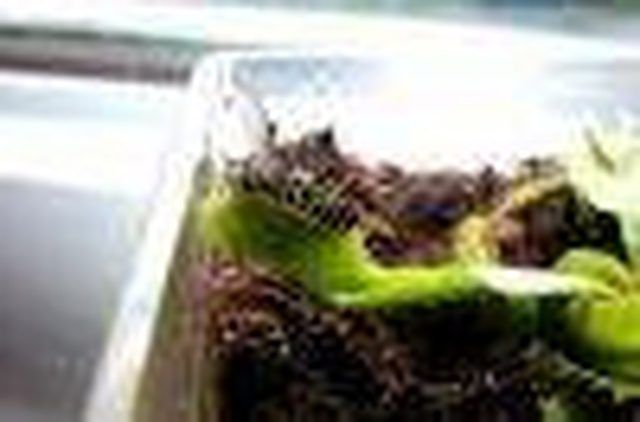Bulbs
Flower Basics
Flower Beds & Specialty Gardens
Flower Garden
Garden Furniture
Garden Gnomes
Garden Seeds
Garden Sheds
Garden Statues
Garden Tools & Supplies
Gardening Basics
Green & Organic
Groundcovers & Vines
Growing Annuals
Growing Basil
Growing Beans
Growing Berries
Growing Blueberries
Growing Cactus
Growing Corn
Growing Cotton
Growing Edibles
Growing Flowers
Growing Garlic
Growing Grapes
Growing Grass
Growing Herbs
Growing Jasmine
Growing Mint
Growing Mushrooms
Orchids
Growing Peanuts
Growing Perennials
Growing Plants
Growing Rosemary
Growing Roses
Growing Strawberries
Growing Sunflowers
Growing Thyme
Growing Tomatoes
Growing Tulips
Growing Vegetables
Herb Basics
Herb Garden
Indoor Growing
Landscaping Basics
Landscaping Patios
Landscaping Plants
Landscaping Shrubs
Landscaping Trees
Landscaping Walks & Pathways
Lawn Basics
Lawn Maintenance
Lawn Mowers
Lawn Ornaments
Lawn Planting
Lawn Tools
Outdoor Growing
Overall Landscape Planning
Pests, Weeds & Problems
Plant Basics
Rock Garden
Rose Garden
Shrubs
Soil
Specialty Gardens
Trees
Vegetable Garden
Yard Maintenance
What Does a Venus Fly Trap Eat?
What Does a Venus Fly Trap Eat?. Venus flytraps are a type of carnivorous plant that lures prey, catches it and digests it. The plants have snap type traps to accomplish their hunting. Like other plants, Venus flytraps also use photosynthesis for nourishment. There is only one species of Venus flytrap: Dionaea muscipula.

Venus flytraps are a type of carnivorous plant that lures prey, catches it and digests it. The plants have snap type traps to accomplish their hunting. Like other plants, Venus flytraps also use photosynthesis for nourishment. There is only one species of Venus flytrap: Dionaea muscipula.
Appearance
Venus flytraps are smallish plants, only growing about 5 inches wide. The traps are easy to spot: they have two special leaves that close to form the shape of a very small calzone. The edges of these leaves have spike-like projections that lace together like fingers when the trap closes to make an airtight seal. The seal gives bugs no chance to escape their fate once they've been caught. The traps are naturally about an inch long, though some cultivars might possess traps that are larger. A plant might have a handful of traps or more than 10. The number of traps a plant produces depends on its growing conditions.
Habitat
The native habitat of the Venus flytrap is in the coastal plains of North and South Carolina in the United States. They live in hot, humid bog-land and thrive in full sun. The soil is acidic and lacks nutrients such as nitrogen. The lack of nutrients found in the soil is the reason Venus flytraps evolved to eat insects. If grown at home, Venus flytraps will die if you try to help them out by fertilizing them.
Prey
The diet of Venus flytraps consists of insects and arachnids (spiders). Since the traps are about 1 inch long, a bug needs to be small enough that the trap can close fully around it and the bug can't power its way out of the trap. The right bug or spider is about one-third of an inch long--about a third of the size of the trap. If a big bug activates the trap and the trap can't seal properly, bacteria will attack the trapped, decomposing bug, introducing rot to the plant.
Attracting Prey
Many plants have the means to attract creatures. For instance, flowers emit fragrance and produce nectar that is inviting to bugs. When the bugs stop by for a meal of nectar, they get pollen on themselves, which they then carry to other flowers, pollinating them so the flowers can produce fruit and seeds. Venus flytraps also produce nectar to lure insects, not for a visit, but for a last supper.
Catching Prey
The inside of the leaves making up the traps on a Venus flytrap have several little "hairs." These are sensitive to touch and serve as triggers. When a bug is crawling around on the trap, looking for the nectar, if it touches the trigger hairs at least twice in quick succession, the leaves close like a jaw. It only takes up to a half a second. When the insect tries to escape, it touches the trigger hairs again and the the trap closes completely. This second trigger sequence helps the Venus flytrap avoid trying to eat things such as twigs that could fall into its "jaws." If the second trigger never happens, the trap reopens.
Eating Their Victims
One a bug is caught, the trap uses glands to secrete acidic juices that bathe the food. The acids kill any bacteria and dissolve the soft tissue of the bug so that the plant can absorb the nutrients. The dissolving and digestion takes at least five days and up to 12 days, depending on how large the insect is, how old the trap is and temperature, with heat conducive to quicker digestion. The plant reabsorbs the digestive juices, which lets the plant know the meal is finished and to reopen the trap. The bug's exoskeleton falls out or is blown away.